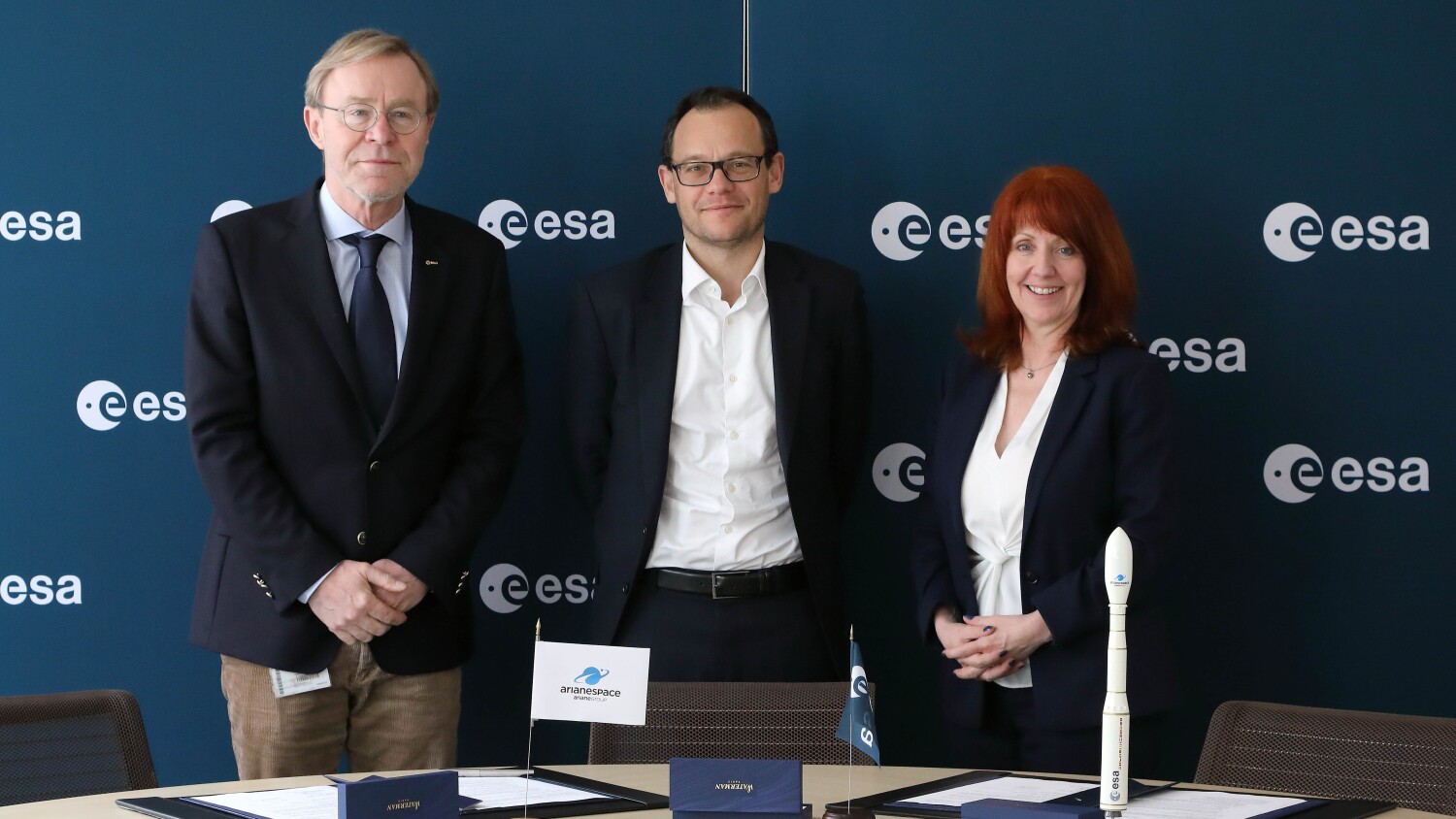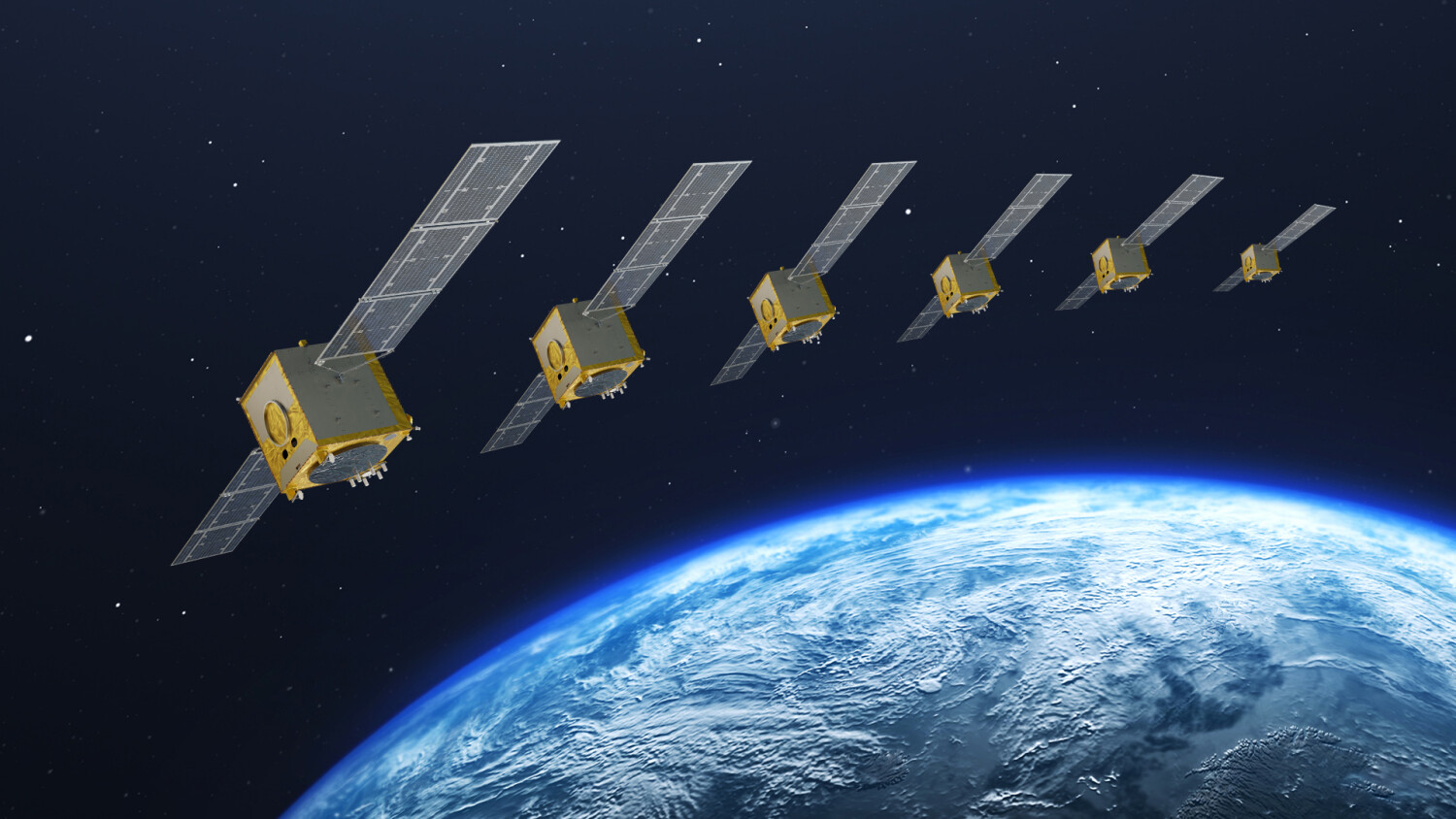Arianespace has successfully launched the EUTELSAT 65 West A satellite for Eutelsat Communications.
The company’s second launch of the year took place on March 9 at 2:20 am (local time) from the Guiana Space Center (CSG) in Kourou, French Guiana. Thierry Mandon, French Minister for Higher Education and Research, was in Kourou for the launch.
This was the 71st successful launch in a row for the Ariane 5 heavy launcher. The company’s second mission of the year keeps Arianespace on schedule to meet its objective of up to 12 launches in 2016, including eight Ariane 5 missions.
Arianespace and Eutelsat, long-standing partners
|
EUTELSAT 65 West A is the 31st satellite launched by Arianespace for Eutelsat. More than 50% of Eutelsat’s satellites were orbited by Arianespace. Three more Eutelsat satellites are on Arianespace’s orderbook for launch, including EUTELSAT 172B. |
Arianespace has worked side-by-side with Eutelsat since 1983, when it launched the Eutelsat-1 F1 satellite. Eutelsat is one of the world’s leading operators of telecommunications satellites. With a fleet of 40 satellites, Eutelsat sells transmission capacity to a large portfolio of customers, including broadcasters, broadcasting associations, TV channels, video, data and Internet service providers, businesses and government entities.
Including EUTELSAT 65 West A, Arianespace has now launched more than half of Eutelsat’s satellites. Three more Eutelsat satellites will be launched by Arianespace, making this operator one of its biggest commercial customers.
A launch to support telecom services in the Americas
EUTELSAT 65 West A is a tri-band satellite that will cover Latin America and Brazil.
The satellite’s Ku-band coverage will spur the growth of direct-to-home (DTH) TV broadcasts for households equipped with dish antennas to receive digital and HD (high-definition) channels. It will also boost the connectivity of businesses located in Central America, the Caribbean, the Andes region and Brazil. Its C-band transatlantic coverage is designed to provide contribution links and video distribution services. The satellite’s Ka-band multibeam payload will help the operator develop Internet access services throughout Latin America, especially in Brazil.
In 2016, one-third of the geostationary satellites launched by Arianespace will be tasked with providing services for the Americas, a region where the upcoming Olympic Games in Rio represent a significant growth factor.
Arianespace’s 2016 objective is raised to 12 launches
In carrying out the year’s second Ariane 5 by early March, Arianespace is well placed to meet its objective of up to eight Ariane 5 launches in 2016. Arianespace has already performed two single launches this year (orbiting Intelsat 29e, and now EUTELSAT 65 West A), and has scheduled five dual launches plus an Ariane 5 ES launch for the Galileo satellite navigation system that will carry four satellites.
|
EUTELSAT 65 West A will provide Brazilian coverage during the Olympic Games in Rio de Janeiro. Its coverage zone will also extend to French Guiana. |
Arianespace will round out the year with two missions by the Soyuz medium launcher and two by the Vega light launcher, making a total of 12 launches. The European Commission decided to accelerate the deployment of the Galileo constellation by adding a Soyuz launch this spring, given the confirmed availability of satellites built by OHB.
Shortly after the announcement of the orbital injection of EUTELSAT 65 West A, Arianespace Chairman and Chief Executive Officer Stéphane Israël said: “Arianespace has just launched its 525th satellite this evening. We are both pleased and proud of having performed this launch for Eutelsat, the European operator who has been our partner since we both started operations in the early 1980s, with French Higher Education and Research Minister Thierry Mandon seeing the launch in person. I would like to thank Eutelsat for its ongoing confidence, and especially Michel de Rosen as he leaves his position in the company’s operational management, which now is entrusted to Rodolphe Belmer.
I am also delighted to see Ariane 5 continue its extraordinary career with its 71st successful launch in a row. I would like to thank the teams in charge of Ariane 5 production under the leadership of industrial prime, Airbus Safran Launchers. I would also like to thank ESA, as Ariane program authority, our partner CNES-CSG and the personnel at the launch base, who provide continued support for our ongoing success, and of course all Arianespace staff, who are fully committed to setting another new operational record in 2016.”
|
The EUTELSAT 65 West A satellite weighed 6,564 kg. at liftoff, and offers a design life exceeding 15 years. To be positioned at 65° West, it is fitted with 15 C-band transponders (36Mhz equivalent), 24 Ku-band transponders (36Mhz equivalent) and will offer up to 24 Ka-band spotbeams. EUTELSAT 65 West A was built by SSL (Space Systems Loral) using a 1300 platform. This was the 53rd SSL platform to be launched by Arianespace. The Arianespace launch manifest includes 12 more SSL satellites: Azerspace-2/IS-38, BRISAT, BSAT-4a, ECHOSTAR XVIII, Intelsat 36, JCSAT 15, NBNCo-1B, STAR ONE D1 and SKYSAT (4 Skybox satellites). |
About Arianespace
To use space for a better life on earth, Arianespace guarantees access to space transportation services and solutions for any type of satellite, commercial as well as institutional, into any orbit. Since 1980, Arianespace has performed missions placing more than 500 satellites into orbit with its three launchers: Ariane, Soyuz and Vega, operated from South America in French Guiana and from Central Asia in Kazakhstan. Arianespace is headquartered in Evry, France near Paris, and has a facility at the Guiana Space Center in French Guiana, plus local offices in Washington, D.C., Tokyo and Singapore.







